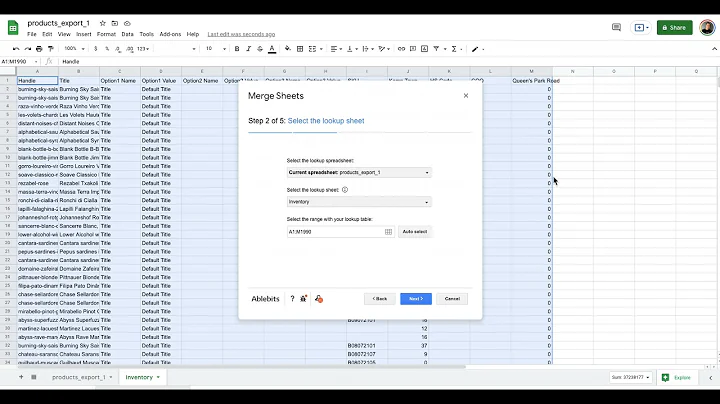Supercharge Your Marketing with SMS & Email
Table of Contents:
- Introduction
- The Power of SMS and Email Marketing in Retention
- The Challenges of Capturing and Retaining Customer Attention
- The Mobile-First Channel: SMS Marketing
- The Strength of Email Marketing
- Subscriber Collection: The Foundation of SMS and Email Marketing
- The Importance of Omni-Channel Subscriber Collection
- Using Pop-Ups for Subscriber Collection
- Dynamic Pop-Ups for Personalized Experiences
- Leveraging Other Tools for Subscriber Collection
- Messaging Strategies for SMS and Email
- Differentiating Between SMS and Email
- Timely and Two-Way Communication of SMS
- Captivating and Creative Email Communication
- Maximizing Engagement with Automated Flows
- Triggered Flows: Recovering Abandoned Checkouts
- Leveraging Flows for Customer Loyalty
- Personalize Flows with Conversational Tools
- Retaining Customers with Cross-Sell Flows
- Boosting Campaign Performance with SMS and Email
- Utilizing the Campaign Planner
- Browse Templates for Campaign Inspiration
- Enhancing Direct Purchasing with Click to Buy
- Best Practices for SMS and Email Messaging
- Understanding Customer Preferences
- Collecting Customer Feedback
- Adjusting Strategies Based on Engagement Data
- Success Stories: Brands Leveraging SMS and Email Marketing
- Savannah Sevens: Dynamic Pop-Ups for Increased Growth
- American Hat Makers: Driving Revenue with Abandoned Checkout Flows
- Bear Phase: Personalized Conversations and Click to Buy Campaigns
- Conclusion
The Power of SMS and Email Marketing in Retention
In today's highly competitive e-commerce landscape, capturing and retaining customer attention is more challenging than ever. Consumers are overwhelmed by choices, and changes in consumer privacy have made it difficult for marketers to effectively target their audience. However, there are two powerful channels that, when used together, can help businesses engage and retain customers: SMS and email marketing.
SMS, or text messaging, is a mobile-first channel that allows businesses to reach customers directly on their phones. With over 150 phone checks a day on average, consumers are highly active on their mobile devices, making SMS a prime channel for engagement. It offers the opportunity to send timely and personalized messages, driving customer interest and repeat purchases.
On the other hand, email marketing provides a platform for businesses to tell their brand's story with more creative freedom. It allows for longer and visually appealing content, making it ideal for showcasing products, sharing account information, and communicating important updates. Email is a valuable channel for building and sustaining a loyal customer base.
By leveraging both SMS and email marketing, businesses can strengthen their overall marketing strategy and successfully turn curious browsers into life-long customers. However, before diving into the strategies and tactics of SMS and email marketing, it is essential to focus on the foundation of any successful campaign: subscriber collection.
Subscriber Collection: The Foundation of SMS and Email Marketing
To effectively engage customers through SMS and email marketing, businesses need to collect subscribers. Taking an omni-channel approach to subscriber collection is key to driving maximum growth. This approach involves utilizing various tools to reach customers wherever they are, whether on the website, social media, in-store, or through packaging inserts.
Pop-ups are one of the most popular and effective tools for subscriber collection. Through customizable pop-up templates, businesses can encourage visitors to opt-in to their SMS or email marketing. Dynamic pop-ups add a personalized touch by adapting to customer behavior and preferences, resulting in a more engaging experience.
In addition to pop-ups, businesses can leverage keyword advertising, social opt-ins, QR codes, and other tools to maximize subscriber collection. Each tool offers a unique opportunity to reach and engage customers, allowing businesses to build a comprehensive subscriber list.
Messaging Strategies for SMS and Email
While SMS and email are both powerful channels, they should be treated differently when it comes to messaging strategies. SMS is best suited for timely and two-way communication, conveying information quickly to generate conversions or encourage customer response. It is ideal for sending reminders, transactional notifications, limited-time offers, review requests, and loyalty program updates. SMS messages should be concise, personalized, and written in a conversational tone.
On the other hand, email marketing provides more creative freedom for longer and visually appealing content. Emails are an opportunity to tell the brand's story, share important account information, win back customers, and remind them of products left behind. Email campaigns can include monthly newsletters, exciting collection launches, and customized product recommendations. Emails should be visually appealing, well-written, and showcase the unique qualities of the brand.
By combining the strengths of SMS and email marketing, businesses can deliver a cohesive and engaging messaging strategy to their customers, increasing overall performance results.
Maximizing Engagement with Automated Flows
Automated flows play a vital role in boosting customer engagement and retention. Triggered flows, such as abandoned checkout flows, can help recover lost revenue by reminding customers to complete their purchases. Other flows focus on increasing customer loyalty, gathering feedback, driving repeat purchases, and updating customers on loyalty program progress. Conversational flows add a personalized touch by engaging customers in automated conversations, gathering relevant information, and recommending personalized product offerings.
By setting up automated message flows, businesses can ensure consistent and personalized communication with their customers, without the need for manual intervention. These flows run in the background, continually engaging customers and driving conversions. Regular analysis of flow performance allows businesses to make data-driven optimizations, improving overall engagement and retention.
Boosting Campaign Performance with SMS and Email
In addition to automated flows, businesses can enhance their marketing efforts with targeted campaigns. The campaign planner provides insights into upcoming key marketing dates and events, helping businesses plan their campaigns in advance. Templates are available for various occasions, including sales, product launches, and SMS-exclusive offers, providing inspiration and saving time.
Click to Buy campaigns expedite the path to purchase by sending customers directly to the checkout page with curated cart links. This removes friction from the purchasing journey, resulting in increased conversions. By leveraging AI-driven product recommendations, businesses can offer personalized product suggestions, further optimizing the click-to-buy experience.
By utilizing the campaign planner, browsing templates, and implementing click-to-buy campaigns, businesses can maximize their campaign performance and drive revenue growth.
Best Practices for SMS and Email Messaging
Understanding customer preferences is crucial when it comes to SMS and email messaging. Some customers prefer receiving communications via both text and email, while others have a preference for one channel over the other. To determine customer preferences, businesses can ask for feedback through conversational flows, polls, or surveys. Alternatively, analyzing engagement data can provide insights into when and how customers prefer to take action.
When crafting SMS and email messages, businesses should focus on personalization and relevance. SMS messages should be direct, approachable, and playful, utilizing emojis and GIFs to engage customers. Emails provide an opportunity to showcase the brand's story and products, allowing for more descriptive and engaging content. By tailoring messages to the strengths of each channel, businesses can effectively engage and retain customers.
Success Stories: Brands Leveraging SMS and Email Marketing
Several brands have successfully leveraged SMS and email marketing to drive growth and revenue. Savannah Sevens, a fashion brand, saw a significant increase in mobile subscribers and overall subscriber growth by using dynamic pop-ups. American Hat Makers utilized abandoned checkout flows to recover lost revenue, resulting in impressive returns on investment. Bear Phase, a skincare brand, created personalized conversations and click-to-buy campaigns, leading to increased conversions and customer engagement.
By learning from these success stories, businesses can gain inspiration for their own SMS and email marketing strategies, ultimately driving growth and customer retention.
Conclusion
SMS and email marketing are powerful channels that, when used together, can effectively engage and retain customers. By focusing on subscriber collection, crafting personalized and relevant messages, leveraging automated flows, maximizing campaign performance, and following best practices, businesses can create a cohesive and engaging SMS and email marketing strategy.
Whether through dynamic pop-ups, conversational flows, or click-to-buy campaigns, businesses have numerous tools at their disposal to capture customer attention and drive conversions. By continuously optimizing strategies based on customer preferences and engagement data, businesses can build a loyal customer base and achieve long-term success in the competitive e-commerce landscape.
Highlights:
- SMS and email marketing are powerful channels for customer retention.
- Subscriber collection is the foundation of a successful SMS and email marketing strategy.
- SMS is ideal for timely and personalized communication, while email allows for more creative freedom.
- Automated flows and campaigns enhance engagement and conversion rates.
- Understanding customer preferences and leveraging data are keys to effective messaging.
- Successful brands have utilized SMS and email marketing to drive growth and revenue.
FAQs:
Q: How often should I send SMS and email campaigns?
A: The frequency of SMS and email campaigns depends on the nature of your business and customer preferences. It's important to maintain a balance between staying top of mind and not overwhelming customers with excessive communication. Space out your campaigns based on the content and urgency of the message, ensuring you engage customers without seeming spammy.
Q: Should I prioritize SMS or email marketing?
A: SMS and email marketing should not be prioritized over one another. Instead, they should complement each other in your overall marketing strategy. SMS is well-suited for timely and urgent messages, while email allows for more in-depth storytelling and content. By leveraging both channels strategically, you can reach customers more effectively and drive better results.
Q: How can I collect more subscribers for SMS and email marketing?
A: Utilize a variety of tools and strategies for subscriber collection, such as pop-ups, keyword advertising, social opt-ins, and QR codes. Take an omni-channel approach, reaching customers wherever they are. Customize and personalize the collection process to match your brand's look and feel, offering incentives for customers to opt-in.
Q: Can I use the same copy for SMS and email campaigns?
A: While the core message can be similar, it's important to tailor the copy for SMS and email campaigns to their respective channel's strengths. SMS messages should be brief, personalized, and written in a conversational tone. Emails can be more descriptive, visually appealing, and allow for longer content. By adapting the copy to each channel, you can maximize engagement and conversion rates.
Q: How can I measure the success of my SMS and email campaigns?
A: Regularly analyze engagement metrics such as open rates, click-through rates, conversion rates, and ROI to evaluate the effectiveness of your SMS and email campaigns. Use A/B testing to optimize your campaigns and make data-driven decisions. Additionally, monitor subscriber growth and retention rates to assess the long-term impact of your marketing efforts.






















